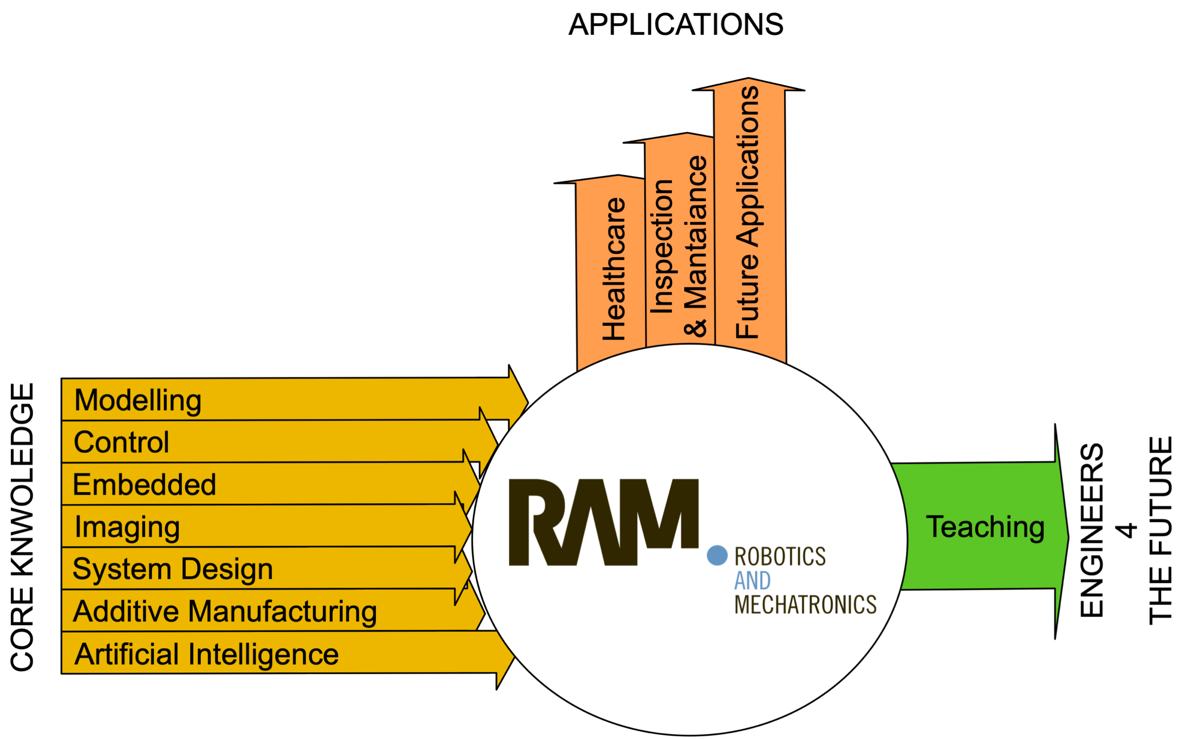Robotics and Mechatronics research group (RaM)
Robotics and Mechatronics (RaM) deals with a range of aspects for the development and application of advanced robotics and mechatronics. The research areas of the group are novel technologies and scientific methodologies for the design and development of innovative components and complete robotic systems. The research is embedded in the IDS and TechMed institutes.
The main goal is to investigate the applicability of modern mechatronics, imaging, and control methods to practical situations in the area of advanced robotics. For this, we use port-based concepts (bond-graphs, port-Hamiltonian systems and process-oriented software structures). This paradigm is a common factor in the group. This port-based paradigm has proven successful in finding effective solutions for problems such as tele-manipulation with time delays, novel passive non-linear control strategies, etc.
Next to modelling and simulation, we construct (prototype) robotic systems using mechatronic and systems engineering approaches: solutions can be found in a variety of domains (i.e. electronic, material, mechanical, embedded software). The solutions are then evaluated both through simulation and realisation of mechatronic systems and their embedded control software. The special mechanical parts are often made in-house, using modern rapid prototyping techniques such as 3D printing.

The group is active on both fundamental and application-driven questions. The fundamental electrical engineering knowledge of modeling, dynamical systems, control, sensors, actuators, real-time (embedded) software, artificial intelligence, and (computer) vision is a direct and clear connection to the needs of education.
A number of socially and economically relevant application fields are addressed; among those, as shown in the Figure above, two prominent ones are the medical field and infrastructure inspection and maintenance. The third large application area is represented by a number of other relevant fields, including security, safety, agriculture, and others.
Relevant challenges in these fields can only be addressed through a holistic approach at the system level, combining RaM’s core knowledge with application-specific knowledge. To this end, RaM is composed of a multi-disciplinary team of researchers, engineers, clinicians, and technical physicists.
